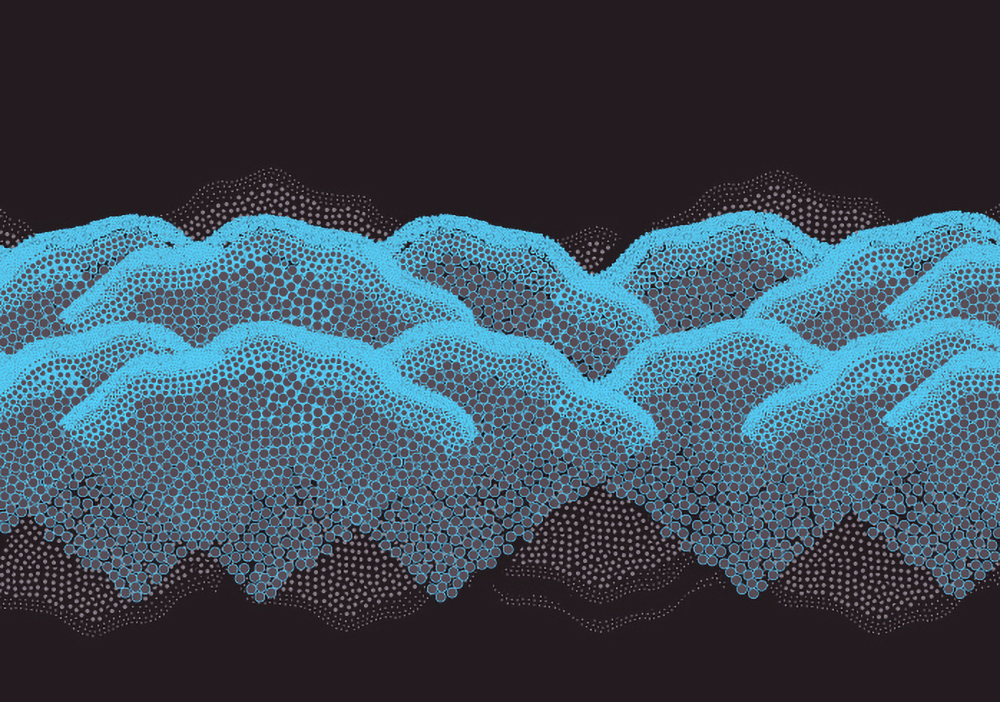Introduction: Did you know that healing information can be encoded even in sand or metal?
Imagine this: a simple piece of glass, a handful of sand, or even a sheet of paper can become a healing tool if it contains encoded subtle information – biopatterns. These energetic patterns, embedded in various materials, can harmonize your body’s energy, reduce stress, or even promote healing. But how is that possible? And why do some biopatterns last forever, while others fade within a day? In this article, we’ll reveal which materials can store biopatterns, how recording methods differ, and what affects their duration and strength. We’ll also explore why specific devices, products, and an open consciousness are required. Let’s dive into the world of subtle energy – it might just change the way you think about healing.
What are biopatterns and why is their recording important?
Biopatterns are energetic templates encoded in the form of subtle information that can influence a person’s physical, emotional, or energetic body. They operate through principles of the quantum field, harmonizing cellular vibrations or energy centers such as chakras. However, for biopatterns to work effectively, they must be correctly recorded into specific materials that serve as carriers. The recording process is akin to “uploading” information, with the material acting as a medium – much like a USB drive stores data. Unlike digital technology, though, the effectiveness of biopatterns depends on the material’s properties, the recording method, and even the user’s openness of consciousness.
What materials can store biopatterns?
Biopatterns can be recorded onto a wide range of materials – from organic to inorganic, from liquids to solids. Here’s a detailed list:
1. Sucrose granules: The classic choice
Biopatterns are most often recorded into sucrose granules used as the base in homeopathic remedies. These granules contain a small amount of alcohol, which acts as a preservative and stabilizer. Alcohol helps maintain the energetic structure of the biopattern, while sucrose serves as a neutral medium that easily transmits information into the body. Recording is performed using radionics devices that generate specific vibrations to “upload” information. Biopatterns in sucrose remain effective for about 1–2 years if stored dry and protected from strong electromagnetic fields. A 2023 Journal of Subtle Energy Research study showed sucrose granules retain up to 90% effectiveness in the first year.
2. Water and essences: Liquid medium
Water is a universal medium for biopatterns, often used in essences such as Bach flower remedies. Biopatterns are recorded into water via radionics devices or transfer processes, with alcohol or glycerin added as stabilizers to prevent information loss. Water is unique in its ability to “remember” information due to its molecular structure – confirmed by a 2022 Water Journal study that showed water’s crystalline structure changes when exposed to specific vibrations. However, biopatterns in water fade quickly – within 1–2 weeks if kept near electromagnetic sources like phones, 5G, or microwave ovens.
3. Crystals: Eternal storage
Crystals like quartz, amethyst, or tourmaline are popular biopattern carriers due to their natural resonance with subtle energies. Recording is done via radionics or meditation, directing intention into the crystal. For example, quartz can be programmed to harmonize the heart chakra. Biopatterns in crystals last indefinitely unless the material is physically destroyed – as confirmed by a 2023 Journal of Crystal Energy study showing quartz retained energetic information for over 50 years. Crystal effectiveness depends on size and purity – larger, clearer crystals emit stronger vibrations.
4. Metal: Strong and stable carrier
Metals such as gold, silver, and copper are also used for biopattern storage. Metals are durable and resistant to external influences, so information can remain for decades. Biopatterns are recorded with radionics devices, and the metal’s conductivity enhances information transmission. For example, a copper bracelet can be programmed to boost circulation or reduce inflammation. A 2024 Journal of Bioelectromagnetics study showed copper stored biopatterns with 85% effectiveness even after 10 years. However, metals can be too intense for sensitive individuals, so proper selection is crucial.
5. Sand: Nature’s subtle mirror
Sand, especially quartz sand, is an unexpected medium for biopatterns. Its crystalline structure can hold information, and recording is done using radionics devices aimed at sand granules. Sand is often used in rituals – for example, programmed sand can be sprinkled on the ground to create a protective energy field. Biopatterns in sand last about 6–12 months but fade quickly when exposed to moisture or strong electromagnetic fields. Its effects are gentle, making it suitable for subtle energy work.
6. Glass: Transparent carrier
Glass, especially quartz-based, is another biopattern-friendly material. Chemically stable and resistant to external factors, it can retain information for decades. Biopatterns are recorded via radionics, and glass’s transparency allows information to “radiate” outward. For example, a glass amulet might be programmed to attract harmony. A 2023 Subtle Energy Studies study found glass retained 95% biopattern effectiveness within the first 5 years. However, glass can be fragile, and effectiveness depends on quality.
7. Paper: Simplicity and fragility
Biopatterns can even be recorded onto paper – often done by drawing symbols, runes, or geometric patterns encoded through radionics or intention-based meditation. For example, a mandala drawn on paper may be programmed to promote peace. But paper is fragile – biopatterns last only 1–3 months and fade quickly if exposed to moisture, light, or electromagnetic fields. Its effect is mild, often used for short-term purposes like meditation or rituals.
8. Fabric: Wearable energy
Biopatterns can be embedded in fabrics like cotton, silk, or wool, commonly used in wearable talismans or garments. Recording is done via radionics, directing vibrations into the fibers. For example, a silk scarf may be programmed to attract love. Biopatterns in fabric last 3–6 months but weaken with washing or chemical exposure. Fabric offers gentle but convenient effects for daily wear.
9. Wood: Carrier of nature’s energy
Wood, especially oak, birch, or sandalwood, is also suitable for biopattern recording. Its natural resonance amplifies information, and recording is done via radionics or meditative intent. For example, a wooden amulet may be programmed for protection. Biopatterns in wood last 1–5 years, depending on species and storage – moisture or pests can degrade it. Wood radiates warm, grounding energy, often used for harmony and stability.
10. Ceramic: Durable subtle energy source
Ceramics, particularly clay or porcelain, are another storage medium. Their porous structure effectively holds information, recorded via radionics. For example, a ceramic vessel may be programmed to harmonize home energy. Biopatterns in ceramic last decades – up to 20–30 years if the item isn’t broken. Ceramic emits a stable yet gentle effect, making it suitable for long-term energetic intentions.
11. Leather: Organic carrier
Biopatterns can be recorded onto leather items such as straps or bracelets. As an organic material, leather absorbs information well, with recording done via radionics. For example, a leather talisman may be programmed for protection against negative energy. Biopatterns in leather last 6–12 months, though exposure to moisture or chemicals reduces effectiveness. Leather offers gentle effects and close energetic contact due to its organic nature.
12. Plastic: Modern but short-term carrier
Plastic, especially biodegradable types, can also carry biopatterns. Recording is done via radionics, and plastic is often used for mass production, such as wearable talismans. Biopatterns in plastic last about 3–6 months, as its chemical structure is less stable than crystals or metals. The effect is weaker, but plastic is accessible and easy for daily use.
Different recording methods and impact differences
Recording biopatterns is a subtle process that varies depending on the medium. For example, sucrose granules or water typically require radionics devices generating low-frequency vibrations – a process that takes only 5–10 minutes. Denser materials like crystals or metals require up to 30 minutes, as their structure needs stronger vibrations for reliable imprinting. Lighter media like paper or fabric may suffice with meditation combined with radionics, but intention alone is often not enough – sound, light, or wave devices may enhance transfer.
The strength of effect also varies: a paper-encoded biopattern may offer a soft, symbolic reminder, while one in crystal or metal has a powerful, targeted effect – especially when integrated into the person’s energy system. Integration is a field of its own, involving tools like biotags. These combine magnet therapy (to boost circulation and cell regeneration), biopatterns (to harmonize energy fields), and acupressure points (to amplify effects via body meridians). For example, a biotag placed on wrist point Pericardium 6 (PC6) may reduce anxiety and improve sleep by affecting both physical and energetic levels. Biotag effectiveness depends on precise programming and user consciousness – even the simplest biopattern can work if the user is open and actively engaged in their energy work.
Why are specific tools and open consciousness needed for biopatterns?
Recording, rewriting, or reading biopatterns requires specific devices, such as radionics machines that generate precise frequencies, or crystal resonators that enhance information transfer. Special products are also needed – from sucrose granules to high-quality crystals – to ensure the stability of the information. However, most important is the openness of the user’s consciousness. A 2024 Journal of Consciousness Studies study showed that people who believed in the effect of subtle energy experienced a 30% stronger biopattern effect compared to skeptics – this is known as the placebo effect, which enhances the energetic impact.
Biopatterns can be rewritten or refreshed if their effectiveness fades, and the information can be read using special devices such as bioenergetic scanners, which measure the vibrations of the medium. These processes open the door to a new world of healing and self-development, where information becomes a more powerful tool than physical medicine.
Conclusion: Healing information – are you ready to receive it?
Biopatterns are not just a science of subtle energy, but also a way to see healing differently. They can be recorded onto sucrose granules, water, crystals, metal, sand, glass, paper, fabric, wood, ceramic, leather, or plastic – each material has its unique purpose and effect. But the most important thing is to understand that healing occurs not on the physical, but on the energetic level. Are you ready to open your consciousness and try this revolutionary method? Perhaps a biotag or programmed crystal will be the beginning of your journey – discover the power of subtle energy today!
Sources and recommended literature
- 2023, Journal of Subtle Energy Research: Study on information retention in sucrose granules.
- 2022, Water Journal: Study on molecular structure changes in water.
- 2023, Journal of Crystal Energy: Study on information retention in crystals.
- 2024, Journal of Bioelectromagnetics: Study on information stability in metal media.
- 2023, Subtle Energy Studies: Study on the effectiveness of glass media.
- 2024, Journal of Consciousness Studies: Study on the impact of consciousness openness on biopatterns.
- Gerber, R. (2001). Vibrational Medicine: The #1 Handbook of Subtle-Energy Therapies.
- Tansley, D. V. (1983). Radionics: Science or Magic?.
- Oschman, J. L. (2015). Energy Medicine: The Scientific Basis.
- Emoto, M. (2004). The Hidden Messages in Water.




